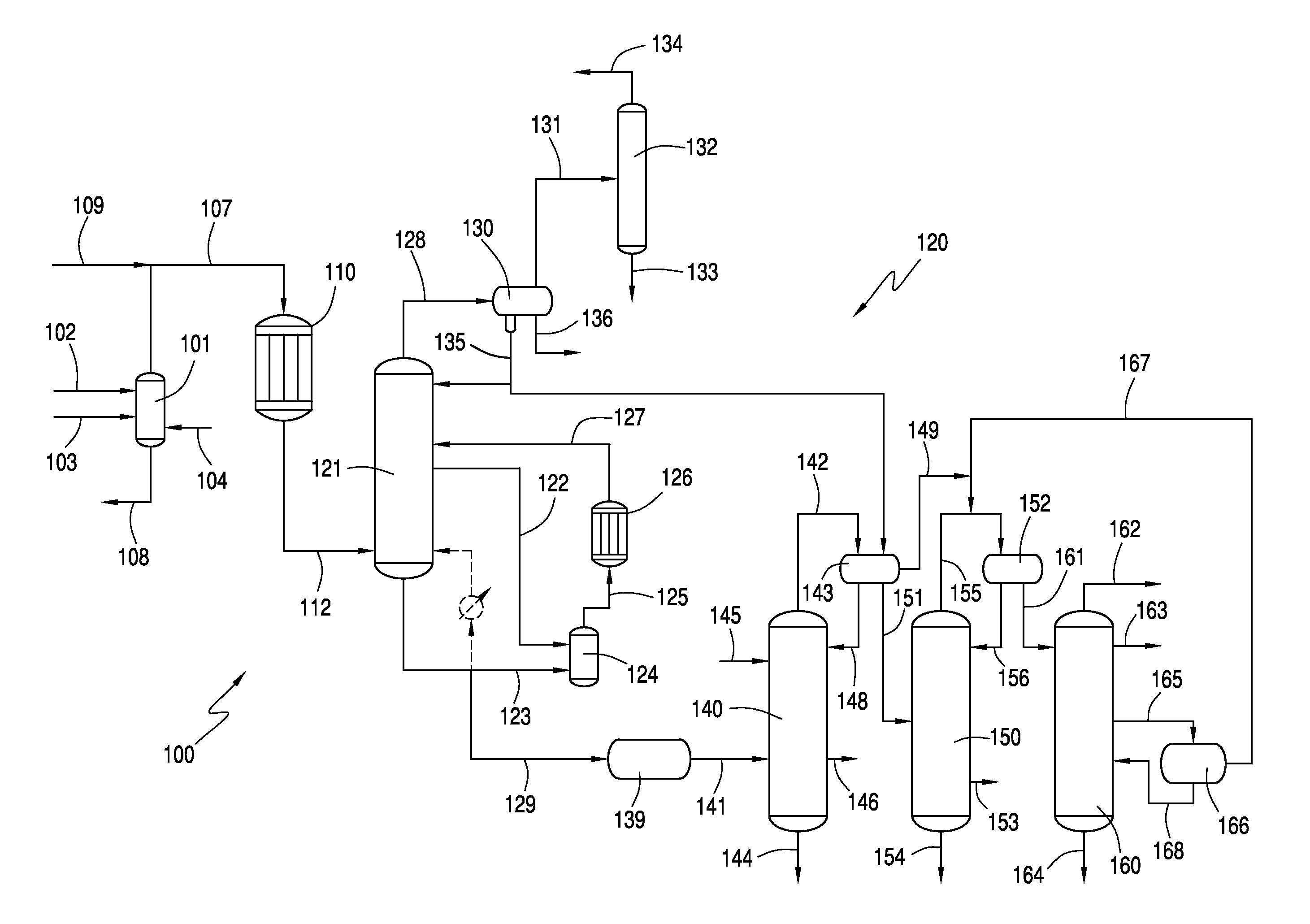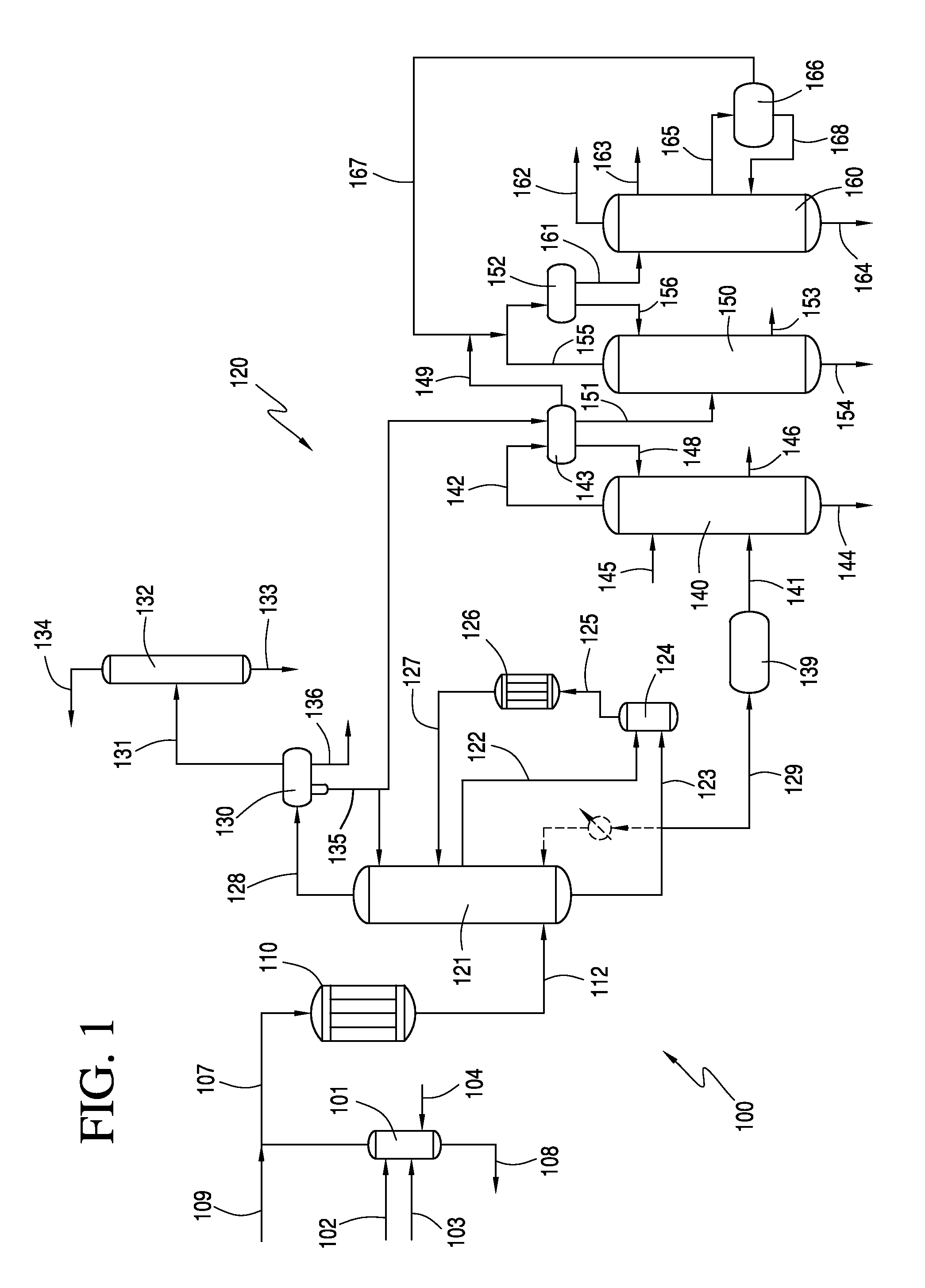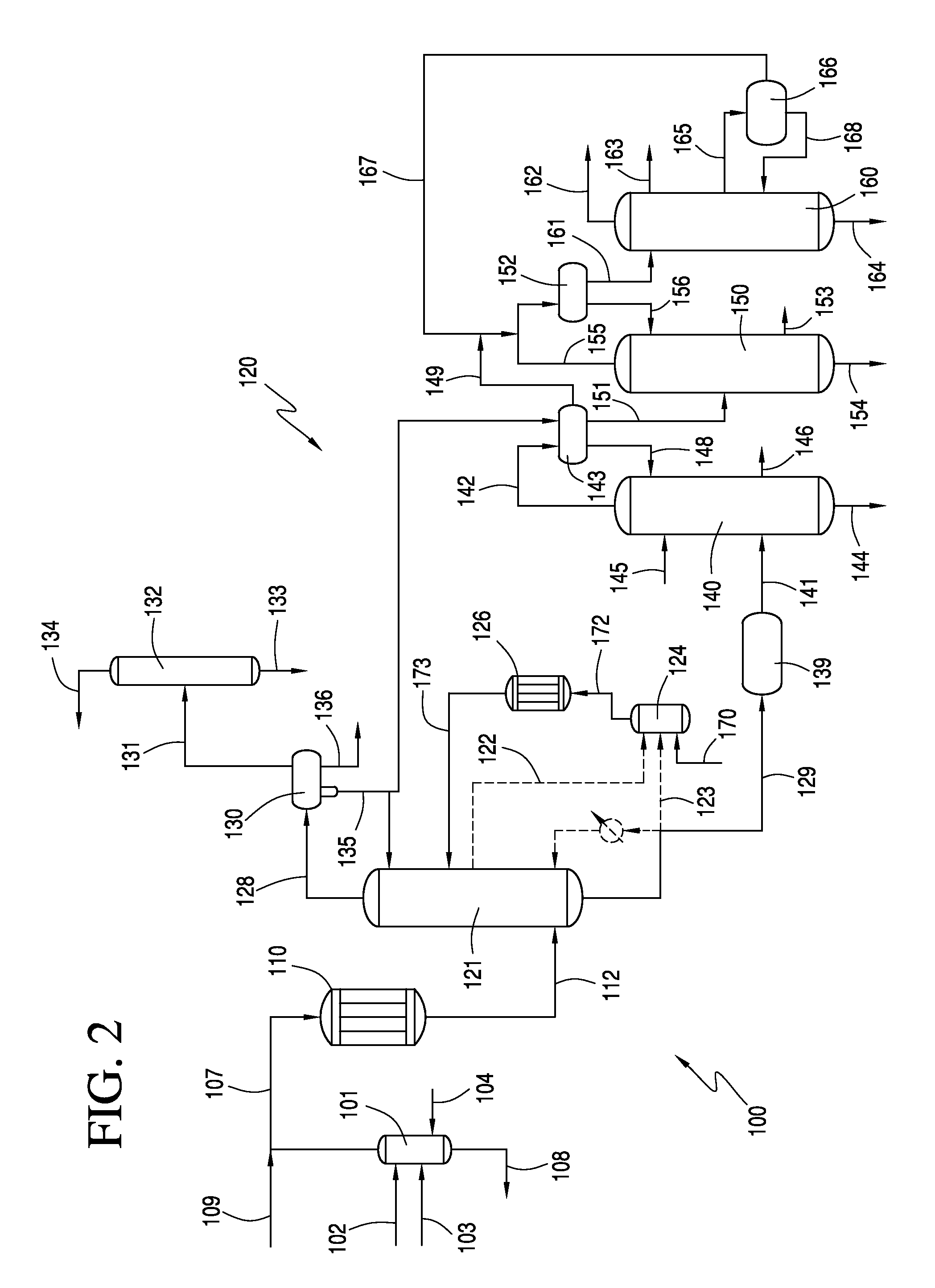Process for vinyl acetate production having sidecar reactor for predehydrating column
a technology of predehydration column and process, which is applied in the preparation of carboxylic acid esters, chemistry apparatus and processes, and organic chemistry, etc., can solve the problems of requiring a large amount of energy for the removal of ethyl acetate, and achieves improved reactionant conversion, higher conversion, and improved co2 selectivity.
- Summary
- Abstract
- Description
- Claims
- Application Information
AI Technical Summary
Benefits of technology
Problems solved by technology
Method used
Image
Examples
example 1
[0057]A crude vinyl acetate stream comprising 13.7 wt. % vinyl acetate (VA), 17.7 wt. % acetic acid (HOAc), 4.5 wt. % H2O, 26 wt. % ethylene (C2H4), 15.9 wt. % CO2, 8.1 wt. % ethane, 7 wt. % methane and 4.6 wt. % O2 was fed to a predehydrating column. The crude vinyl acetate stream has 5.5 mol % VA. Predehydrating column had 25 theoretical trays and operated at a top pressure of about 1.19 MPa and a base temperature of about 126° C. A vapor stream was withdrawn from above the feedpoint of the crude vinyl acetate stream and fed to vaporizer. Vapor stream comprised 13.7 wt. % VA, 12.6 wt. % HOAc, 5.9 wt. % H2O, 27.5 wt. % C2H4, 16.9 wt. % CO2, 8.6 wt. % ethane, 7.4 wt. % methane and 4.8 wt. % O2. In addition, a liquid stream obtain from the base of predehydrating column was also fed to vaporizer. Liquid stream comprised 9.9 wt. % VA, 74.6 wt. % HOAc, 14.7 wt. % H2O, 0.3 wt. % C2H4, and 0.3 wt. % CO2. The mass flow of the vapor stream was about 98,500 lb / hr and the liquid stream had a ...
example 2
[0062]The same crude vinyl acetate stream of Example 1 was fed to a predehydrating column. Predehydrating column had 25 theoretical trays and operated at a top pressure of about 1.19 MPa and a base temperature of about 125° C. A vapor stream was withdrawn from above the feedpoint of the crude vinyl acetate stream and fed to vaporizer. Vapor stream comprised 14.4 wt. % VA, 10.5 wt. % HOAc, 6.4 wt. % H2O, 27.9 wt. % C2H4, 17.1 wt. % CO2, 8.7 wt. % ethane, 7.5 wt. % methane and 4.9 wt. % O2. In addition, a liquid stream obtain from the base of predehydrating column was also fed to vaporizer. Liquid stream comprised 9.5 wt. % VA, 71.1 wt. % HOAc, 18.6 wt. % H2O, 0.2 wt. % C2H4, and 0.3 wt. % CO2. The mass flow of the vapor stream was about 260,000 lb / hr and the liquid stream had a mass flow of about 135,500 lb / hr, for a mass flow ratio of liquid stream to vapor stream of about 1:1.9.
[0063]Vapor stream and liquid stream were vaporized to produce a secondary reactant stream having a compo...
PUM
| Property | Measurement | Unit |
|---|---|---|
| temperatures | aaaaa | aaaaa |
| pressures | aaaaa | aaaaa |
| weight | aaaaa | aaaaa |
Abstract
Description
Claims
Application Information
 Login to View More
Login to View More - R&D
- Intellectual Property
- Life Sciences
- Materials
- Tech Scout
- Unparalleled Data Quality
- Higher Quality Content
- 60% Fewer Hallucinations
Browse by: Latest US Patents, China's latest patents, Technical Efficacy Thesaurus, Application Domain, Technology Topic, Popular Technical Reports.
© 2025 PatSnap. All rights reserved.Legal|Privacy policy|Modern Slavery Act Transparency Statement|Sitemap|About US| Contact US: help@patsnap.com



